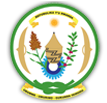Project Name: Second Rwanda Urban Development Project (RUDP II)
Project Description (components, sub-components and activities:
The overall project development objective is to improve access to basic services, enhance resilience and strengthen urban management in the City of Kigali and the Six Secondary Cities. The project working area will remain as of ongoing RUDP, which is the city of Kigali and Six Secondary Cities (Huye, Muhanga, Rusizi, Rubavu, Musanze, Nyagatare). The particularities of RUDP II will in addition to the ongoing investments under RUDP is the comprehensive upgrading of informal settlement as enhancement of resilient infrastructures like Gikondo and Nyabugogo wetland rehabilitation and rehabilitation of 6 identified hotspots of (Kinamba, Rugunga, Rwandex-Majerwa, Mulindi, Masaka, Gacuriro). Another area of project intervention planned under RUDP II is the Institutional capacity building for the sustainability of completed investments and steady improvement of urbanization. A range of capacity building in form of technical assistance at central government and local government is well planned under RUDP II. Still RUDP II will continue to support urban development by improving access to basic services, which is in line with empowering the potential emerging cities through infrastructure development and service provisions to stimulate the other pool factors in a bid to unlock the transformative economic opportunities for liveability and productivity.
The project components an sub-components are summarized as follows:
Component 1: Support to the City of Kigali:
•Sub-Component 1.a:Integrated urban planning for resilient, inclusive infrastructure delivery
•Sub-Component 1.b: Evidence-based, sustainable wetland management, flood risk management and greenhouse gas monitoring in CoK
Component 2: Support to Secondary Cities
•Sub-Component 2.a: Infrastructure delivery and service delivery in Secondary Cities
•Sub-Component 2.b: Institutional capacity development of Secondary Citi
Component 3: Institutional Capacity Development and Project Management
•Sub-Component 3.a: Institutional Capacity Development at National Level
•Sub-Component 3.b: Project Management
Component 4: Contingency Emergency Response Component
The component 1 has two subcomponents which are Subcomponent 1a: Integrated urban planning for resilient, inclusive infrastructure delivery in CoK and Subcomponent 1b: Evidence-based, sustainable wetland management, flood risk management and greenhouse gas monitoring in CoK. Activities of the subcomponent 1 include 4 urban upgrading of unplanned resettlements (civil works for road access, pedestrian walkways, and streetlights); flood infrastructure (hotspots); Storm water management master plan; Water level monitoring; Technical assistance (TA) for master plan implementation in Kigali and TA for CIP, revenue enhancement, expenditure management and innovative financing for wetland sustainability. Under the sub-component 1b, the sub-projects include wetland rehabilitation of Gikondo and Nyabugogo; LiDAR survey;
GHG monitoring and reporting framework for CoK; advocacy, knowledge exchange and partnerships.
The 2 sub-components of the component 2 are Infrastructure and service delivery in secondary cities and Institutional capacity development of secondary cities. The sub-component 2a will comprise of phase 3 and 4 whose investments include the civil works for urban infrastructure (Asphalt roads; pedestrian walkways storm water drains; street lighting and bus stops). The subcomponent will also include TA for planning, design and supervision. The main sub-projects of the sub-component 2b are the provision of TA for master plan implementation and TA to support City Management Offices (CMOs) through institutional capacity development activities.
The last component of Institutional Capacity Development and Project Management has also two sub-components. Subcomponent 3a: Institutional capacity development at national level. The focus will be put on TA in roadmap establishment for the City Management Offices (CMOs) development; TA for implementation and monitoring of national urbanization policy and TA for lessons learned of upgrading pilots (such Agatare) and developing guidelines for urban upgrading. Moreover, the subcomponent will provide TA for strategy development of sites and services for urban development; TA for national solid waste management strategy, feasibility studies for disposal facilities in 6 SCs. The subcomponent 3b of the project management will include the budget allocated to the implementing agencies/ institutions at MININFRA PCU, CoK KUUT, REMA SPIU, LODA SPIU, and District PIUs for the project management and budget for Resettlement and compensation costs.
Environmental and Social Management of the project:
The RUDP II environmental rating is “Substantial” because of the following main reasons: large number of civil works dispersed in 7 cities in populated urban areas; limited experience of the districts in the application of the new Environmental and Social Framework (ESF) and the high coordination that will be needed for proper supervision, high number of stakeholders that will be affected; challenges to manage a large number of contractors and workers in different cities and at the same time to supervise compliance of the ESF instruments and cumulative impacts local residents will experience within a community. Potential impacts include (i) disruption of normal life in populated areas, ii) damages in public services (roads, water services, bus stations, access to schools, homes, etc. in unknown period of time), iii) waste generated at construction sites which can pollute land and water bodies (cement mixing areas, metal, wood and paint residues, diesel and other residues); iv) excavations, open ditches and slope cutting over long periods which can cause accidents to local residents; (v) cutting of slopes and sedimentation of streets, drainage, (vi) cutting of trees and damage to vegetation when debris or soils are pushed in slopes edges and (vii) road accidents among others. It is envisaged that the management of those project-related environmental and social impacts and many others will require application and compliance with the ESF documents: ESMF, RPF, LMP, SEP and ESCP.
CONTACT PERSONS
-RUDP Coordinator
MUNYANEZA George
Email: george.munyaneza@mininfra.gov.rw
Tel:(+250) 788-756-528
-RUDP Public Financial Management Specialist
HABIYAREMYE Valens
Email: valens.habiyaremye@mininfra.gov.rw
Tel:(+250) 788-782-137
-RUDP Procurement Specialist
GATO Samuel
Email: samuel.gato@mininfra.gov.rw
Tel:(+250) 788-436-474
-RUDP Monitoring & Evaluation Specialist
NSABIMANA Jean de Dieu
Email: jdedieu.nsabimana.nsabimana@mininfra.gov.rw
Tel:(+250) 788-805-568
-RUDP II Focal Point
BIZIMANA Jean Claude
Email: jclaude.bizimana@mininfra.gov.rw
Tel:(+250) 788-635-175
............................................................................................
RUDP II LMP May 2020 for Public Disclosure
RUDP II SEP May 2020 for Public Disclosure
RUDP II l RPF May 2020 for Public Disclosure
RUDP II ESMF May 2020 for Public Disclosure
............................................................................................

 ENGL
ENGL KINY
KINY